The DFI RDX200 CF-DR Motherboard Review
The Layout: CPU Socket & Memory
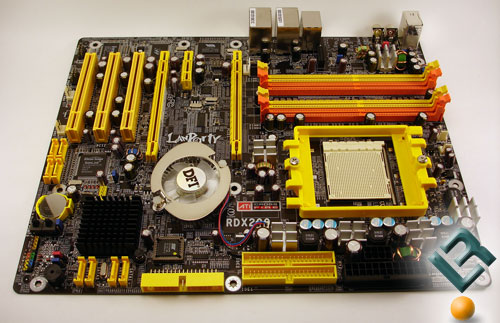
The RDX200 CF-Dr features the exact same color scheme found on DFI’s LANParty NF4 boards with a black PCB covered with fluorescent orange and yellow connectors, perfect for those who have case windows and fluorescent lighting.
Built around AMD’s socket 939, the RDX200 CF-DR supports all AMD socket 939 processors including the Athlon 64 X2, Athlon 64 FX, Athlon 64, and Sempron. For those of you into the latest Opteron craze, DFI’s official word is there is no support for socket 939 Opterons (because this is a desktop based board and the Opteron is actually a server CPU….. however I have not seen any problems arising from this combination.
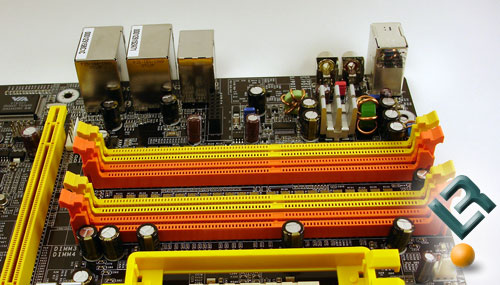
The DFI RDX200 CF-DR supports 4GB of 184 pin DDR1 memory in dual channel. To run in dual channel make sure you use either both run the memory in the color matched channels (yellow or orange slots), or fill up all four memory slots. Right away a few things that should jump out at you are the DIMM slots and the placement of the CPU socket. We’ll touch more on both topics in a minute, but from an initial inspection the DFI RDX200-CF-DR is an attractive and fairly well designed board.
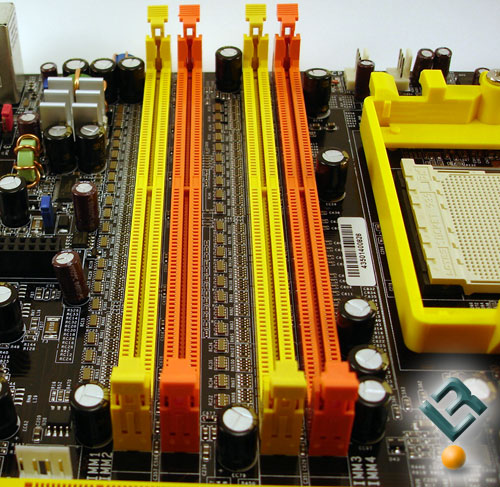
One of my favorite aspects of the NF4 Ultra and SLI boards was that DFI rotated the memory slots to a horizontal position over the CPU socket, allowing the internal case airflow to help cool the memory modules. While this design is a moot point for those that have heat sinks like Thermalight XP-120, those who use water or stock cooling might have to add an extra fan to push air over their memory modules. If you look at the bigger picture (figuratively) then you’ll notice the memory is situated in the upper left corner of the board just under where most power supplies sit (and generate heat), and are perpendicular to the top x16 PCI-E slot, away from the air flow most case manufacturers try to create to cool a systems components.
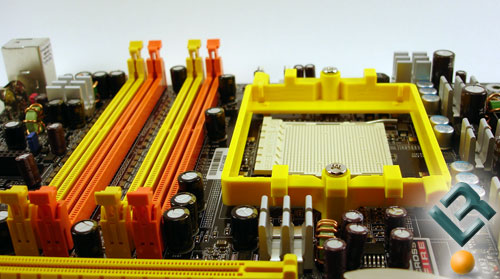
As far as spacing goes, I don’t see much issue with any particular cooling solution. those using HSF with large bases may encounter issues when trying to utilize the boards orange memory slots, and those who use Cooler Master’s Aquagate Mini (water cooling) may have issues mounting their CPU heatsink. Other than that, the CPU socket area is organized in such a way to maximize the cooling generated by the CPU HSF.
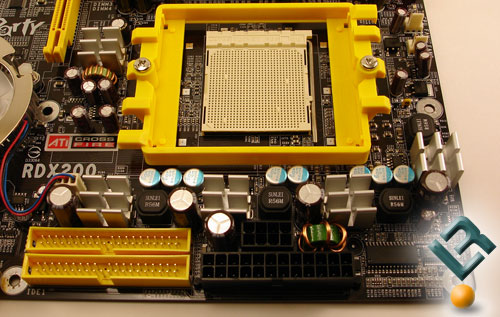
While we touched on the CPU socket above, I wanted to revisit it for a couple of different reason. First, DFI has done an outstanding job adding passive coolers to the boards mosfets. I don’t think the majority of users really appreciate the quality of work that goes into DFI’s boards. Second, DFI has moved the CPU socket to the middle of the board, slightly above center. This created problems for me and my HSPC Tech Station during testing as the cooler would not fit under the HDD rack. However the CPU socket placement should not cause problems for anyone actually using a case.
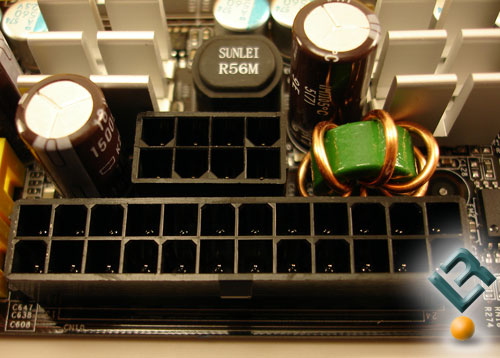
The RDX200 CF-DR requires a 24 pin power ATX PSU, and as stated in their support forums, DFI boards do not support 20 pin power supplies. Also of note here is the usage of an 8-pin 12V connector, which is recommended, but not required. The instruction manual does say that a 4-pin connector will work fine (As always, read the manual before connecting anything to your motherboard).

Comments are closed.